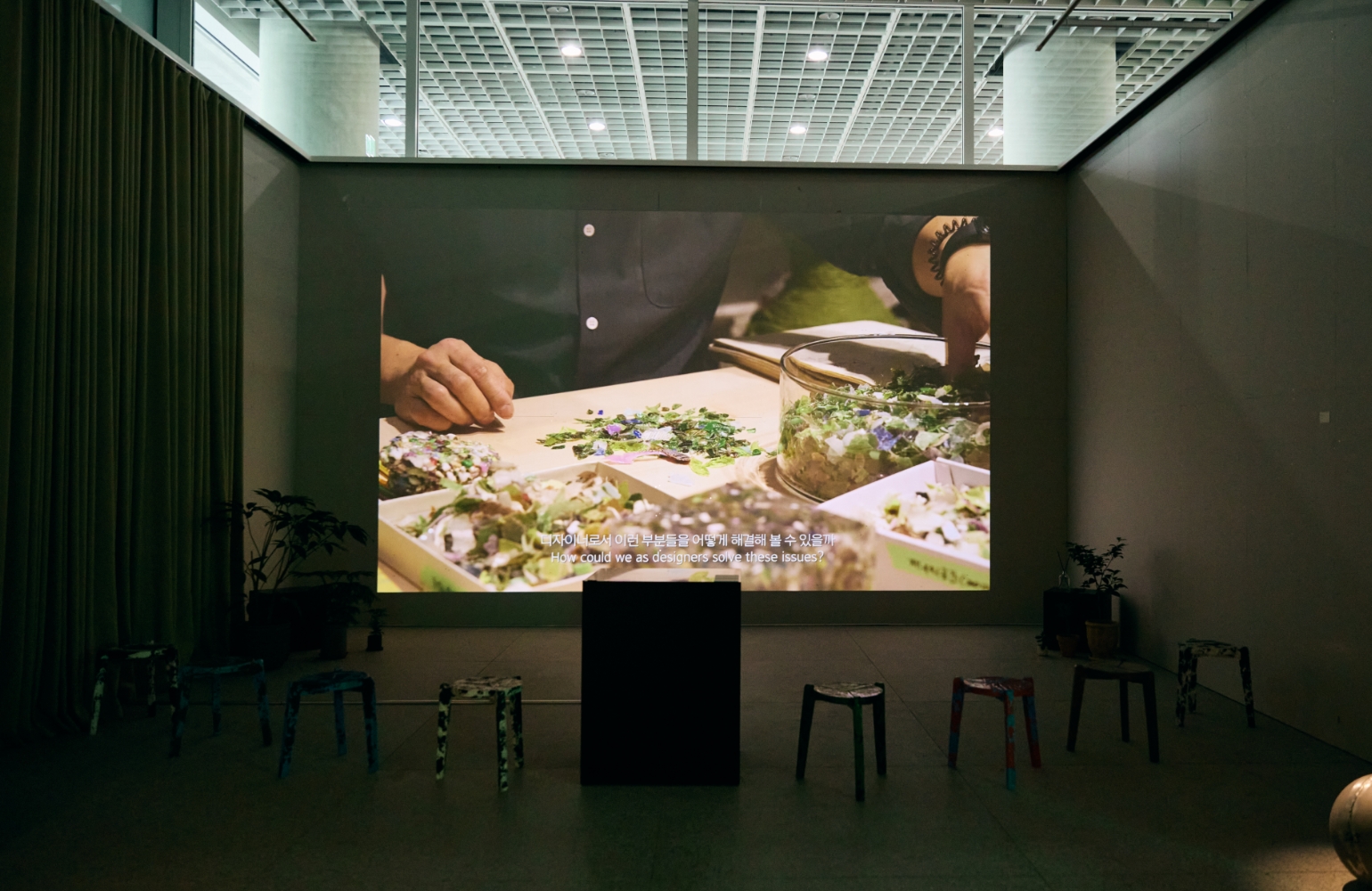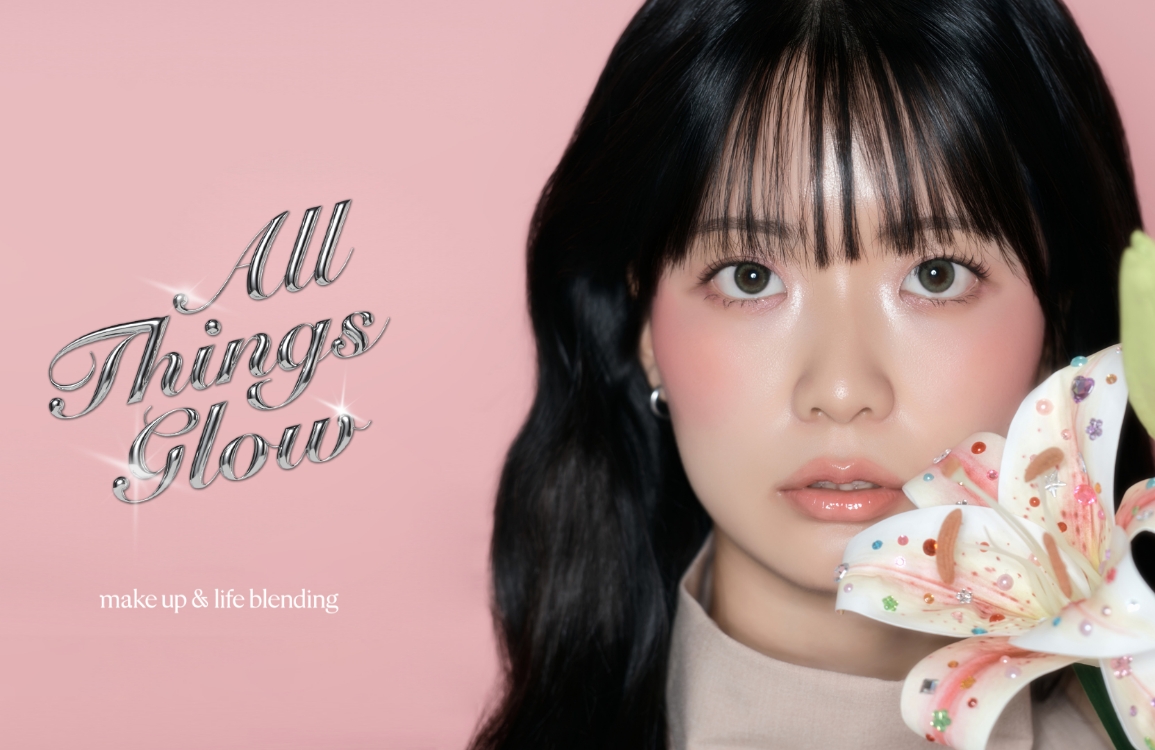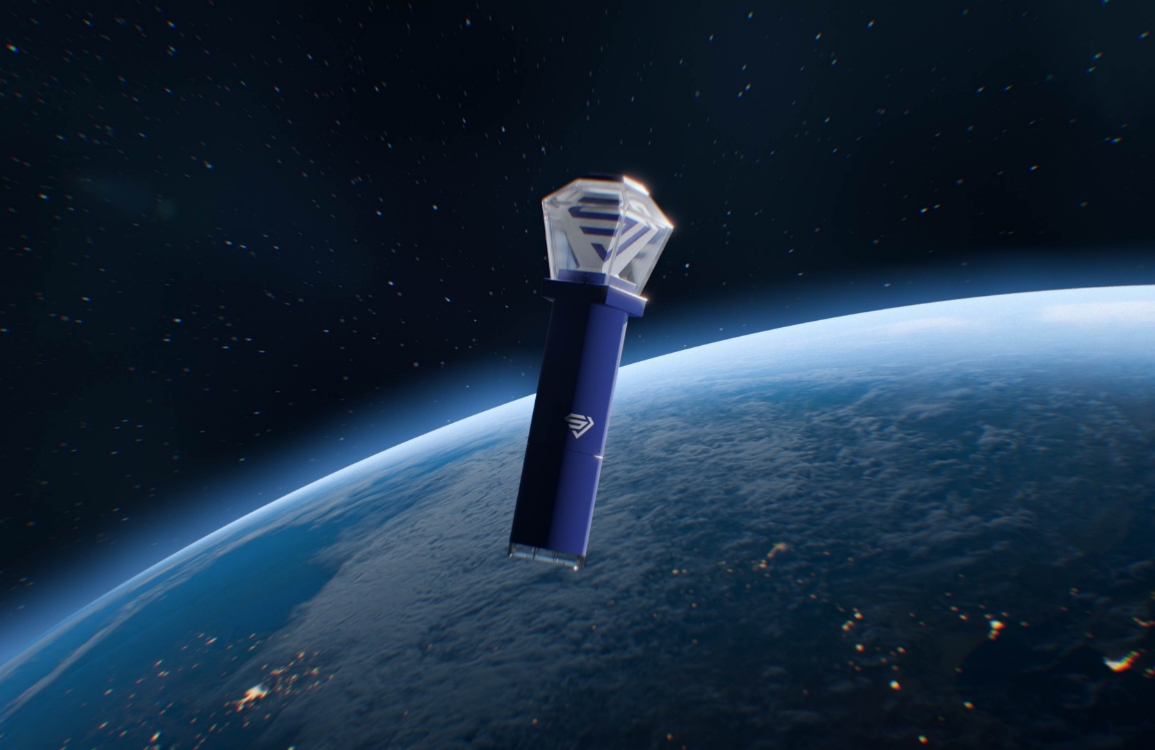Sustainable Design
Amorepacific Design Center
Designer Kim Ji Won
Approximately 3.6 million single-use plastic makeup tools are used in stores annually, along with more than 300 plastic visitor badges discarded every day. This eco-friendly design project began with an awareness of these plastic issues and a simple goal: to achieve sustainable design without harming the environment. By promoting responsible consumption and environmentally conscious design, the project highlights examples such as eco-friendly visitor badges used at the global headquarters and sustainable makeup testing tools.
Editor Urbanbooks Lee Bom
Photographer Amorepacific Shin Sang Woo
Videographer Lee Jun Hyeok
Approximately 3.6 million single-use plastic makeup tools are used in stores annually, along with more than 300 plastic visitor badges discarded every day. This eco-friendly design project began with an awareness of these plastic issues and a simple goal: to achieve sustainable design without harming the environment. By promoting responsible consumption and environmentally conscious design, the project highlights examples such as eco-friendly visitor badges used at the global headquarters and sustainable makeup testing tools.
Editor Urbanbooks Lee Bom
Photographer Amorepacific Shin Sang Woo
Videographer Lee Jun Hyeok

Please give us a brief introduction about yourself.
Hello, I’m Kim Ji Won, a designer in the Corporate Identity (CI) department of the Corporate Design Team. After joining the company, I worked on product design for luxury brands, and last year I transitioned to the CI department, where I now focus on designing corporate CSR campaigns. In this role, I place greater emphasis on the company’s values and vision from a broader corporate perspective. Lately, I’ve become more aware of the environmental impact of excessive plastic use—a growing global issue—and feel a strong sense of responsibility to reduce plastic consumption. As a result, I’m currently planning and executing an eco-friendly design project aimed at minimizing plastic use.

An eco-friendly business card created as part of a sustainable design project.

Eco-friendly makeup testing tools developed as part of a sustainable design project.
Please introduce the eco-friendly design project you recently carried out.
The eco-friendly design project began with changes within the company’s internal environment. To reduce plastic consumption, all employees started using tumblers instead of disposable cups, and plastic-free paper cushioning and paper tape were adopted as eco-friendly packaging materials in distribution and logistics. Additionally, at the design center where I work, we’ve been minimizing excessive packaging and reducing plastic usage by restructuring container designs. This process naturally sparked an interest in eco-friendly design.
How did you come up with the idea for the eco-friendly visitor passes and eco-friendly makeup testing tools, which are part of the eco-friendly design project?
We recognized the issue of more than 300 PVC visitor passes and over 3.6 million single-use plastic testing tools being used and discarded daily after serving only a brief purpose. For the eco-friendly visitor passes at our global headquarters, our goal was to enhance sustainability, increase their keepsake value for visitors, and present a positive corporate image. To achieve this, we incorporated graphic elements featuring the headquarters, refined the design details, and explored various TCR solutions. As for the single-use makeup testing tools, we conducted a survey of global beauty brands and identified problems of excessive luxury and over-specification. In response, we researched eco-friendly materials and production methods across the entire lifecycle—from planning to disposal. Through this process, we discovered a new sustainable material called SEED.


The makeup tools, made from rice sticks, a plant-based material with rice and tapioca as the main ingredients, are eco-friendly and contribute to the natural cycle.
This press kit captures the essence of the RareKind brand well. What was the most important aspect you focused on?
Pop-up stores have a strong guerrilla event feel, delivering unexpected joy in spontaneous moments. We focused on how to best capture that essence. To create a dramatic effect when opening the box, we decided to include a mirror ball—evoking the lighting of a festival—inside the kit. I had seen another beauty brand incorporate flashing lights into their kits before, which I thought was a fresh idea. It made me realize that we could approach our kit design in a similar way. Since the experience a product can offer is often limited beyond its visual appeal, I wanted to provide a unique sense of joy—and we made every effort to reflect that in the design.
Instead of the plastic material commonly used in makeup testing tools, we created Rice Stick, made from a mixture of rice and tapioca. What are the advantages and characteristics of Rice Stick compared to other materials?
To address the issue of single-use plastic waste in stores, we conducted comprehensive research on eco-friendly design processes and alternative materials to minimize environmental impact. This led to the development of four new SEED materials. We removed PVC coatings from paper sticks, created pulp sticks through steaming, introduced food-grade paper to replace plastic spatulas that come into direct contact with the skin, and developed rice sticks made from 100% naturally biodegradable materials to promote the value of natural cycles and achieve zero waste. Rice sticks, primarily made from plant-based ingredients such as rice and tapioca, are food-grade materials approved by the Ministry of Food and Drug Safety. After use, they can be disposed of as food waste or general waste, and once released into the environment, they naturally decompose into soil, air, and water. This makes them an eco-friendly material that contributes to the natural cycle.


An eco-friendly visitor pass for the global headquarters, designed to harmonize environment and design while offering visitors a meaningful experience.
The global headquarters visitor pass features various aspects of the Amorepacific headquarters. What were the key design considerations?
We focused on the essence of sustainability by applying minimal processing and removing unnecessary elements. At the same time, as a beauty-leading company, we enhanced design details to present a more authentic and appealing corporate image to the millennial generation. We replaced plastic with eco-friendly FSC-certified paper, eliminated color printing, and broke away from the limitations of plain PVC plastic by applying micro 3D engraving to create new surface textures and intricate details—further enhancing the corporate identity. In addition, we designed and planned the graphics by vectorizing images of the global headquarters based on architectural blueprints to offer visitors a more memorable experience.
In this project, new materials and technologies were applied in addition to design. What were the challenges you faced during the process?
Since the paper material is crafted manually rather than molded, it is highly susceptible to environmental factors such as temperature and humidity, making it difficult to control the outer dimensions. Additionally, although the eco-friendly process avoids chemical treatments and uses natural materials, it results in a slightly weaker structure and a less luxurious feel. Nevertheless, we prioritized authentically conveying our commitment to responsible consumption, environmental awareness, and the core values our company upholds.


Amore Seongsu Beauty Lounge, embodying the true essence of nature through earth, stone, and wood

Eco-friendly makeup tools used in the library
Due to growing environmental concerns, various sustainability efforts are emerging worldwide. Design must now also take the environment into account. How are you, as a designer, affected by these changes?
At the Design Center, we collaborate with various departments to reduce plastic usage by minimizing excessive packaging, restructuring container designs, and exploring eco-friendly packaging materials such as bioplastics and pulp-based alternatives to plastic caps. Through this process, we naturally consider every stage of the design journey—from planning to disposal—and reflect on how to integrate these values into the design itself.

Amorepacific’s new headquarters building was vectorized to allow visitors to take home a blueprint-inspired, eco-friendly souvenir. © Courtesy of David Chipperfield Architects; © Courtesy of Hyundai Engineering & Construction; © Amorepacific
Do you have any memorable episodes from this project?
When developing the design for the global headquarters visitor pass, there were many restrictions that made the process time-consuming. We had to maintain the size and thickness of the existing plastic visitor pass case to reuse it, and we had to search for eco-friendly FSC-certified paper, find printing equipment capable of meeting the required conditions, and even search for dedicated cartridges, all of which required countless tests. Additionally, it took a significant six months to find the appropriate equipment. Since we applied a 3D embossed graphic symbolizing the global headquarters onto the smooth plastic material, there were constraints on the printing equipment, requiring us to set the thickness and embossing depth range for each line. The sense of accomplishment when we finally succeeded in the printing test was indescribably joyful. (Laughter)
What personal or professional achievements do you think you have made through this project?
Whenever I begin a design project, I always prioritize sustainability. Through this project, I was able to break free from the guilt of creating what often feels like “pretty trash” as a designer. In particular, the survey on the eco-friendly visitor pass showed a notable increase in visitor satisfaction with the design. I felt proud and found the project especially meaningful, as it also enhanced the company’s image through its commitment to sustainability.
I am curious about the future strategy for eco-friendly campaigns.
We plan to continue researching alternative eco-friendly materials. For example, for in-store eco-friendly makeup tools, we aim to develop disposal container designs that allow the header—where product residue may remain—and the body to be easily separated for recycling. We also intend to explore and enhance products and in-store environmental designs that move closer to being plastic-free, from product development to store layout. We hope that our efforts and innovations in sustainable design will continue to expand into various fields in the future.

Eco-friendly Project
This project was initiated in response to the growing concern over indiscriminate plastic use. It aims to reflect the company’s commitment to sustainability by replacing single-use plastic testing tools and plastic visitor passes in stores with eco-friendly alternatives.
Design Key Point #1
Eco-friendly Global Headquarters Visitor Pass
By replacing the existing plastic visitor pass with FSC-certified paper and applying micro 3D engraving, we achieved a refined surface texture and intricate detailing that enhance the corporate identity. Based on the floor plan of Amorepacific’s new headquarters, we vectorized key architectural features and incorporated them into the design, creating a visitor pass that feels memorable and worth keeping.
Design Key Point #2
Eco-friendly Global Headquarters Visit Certificate
Recognizing the environmental impact of single-use plastic makeup tools used in stores, we developed a low-impact processing method along with four new eco-friendly materials. These include uncoated paper sticks, pulp sticks produced through steaming, food-grade paper as a substitute for plastic spatulas that come into direct contact with the skin, and rice sticks made from 100% naturally biodegradable materials.
- Amorepacific Creatives
























